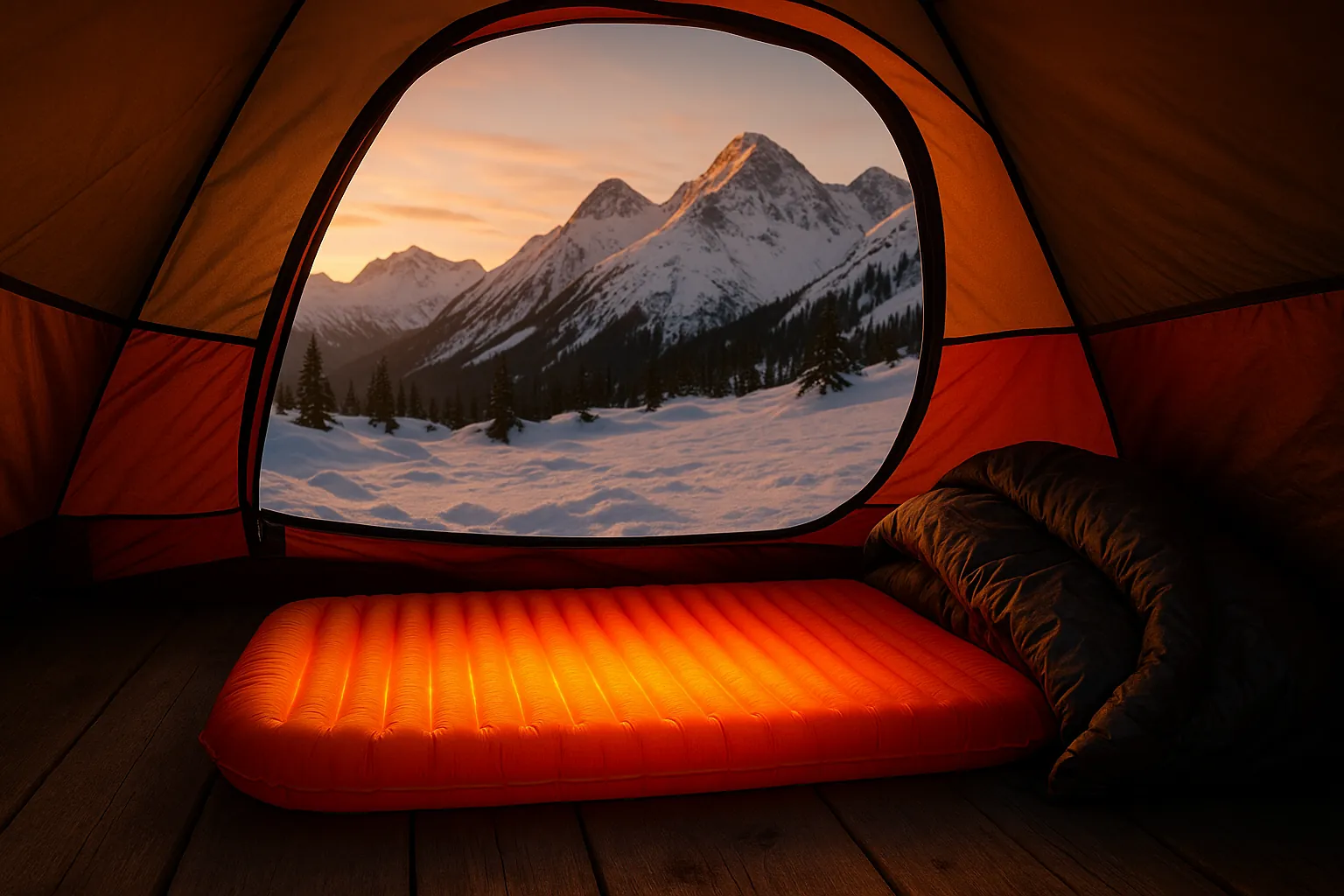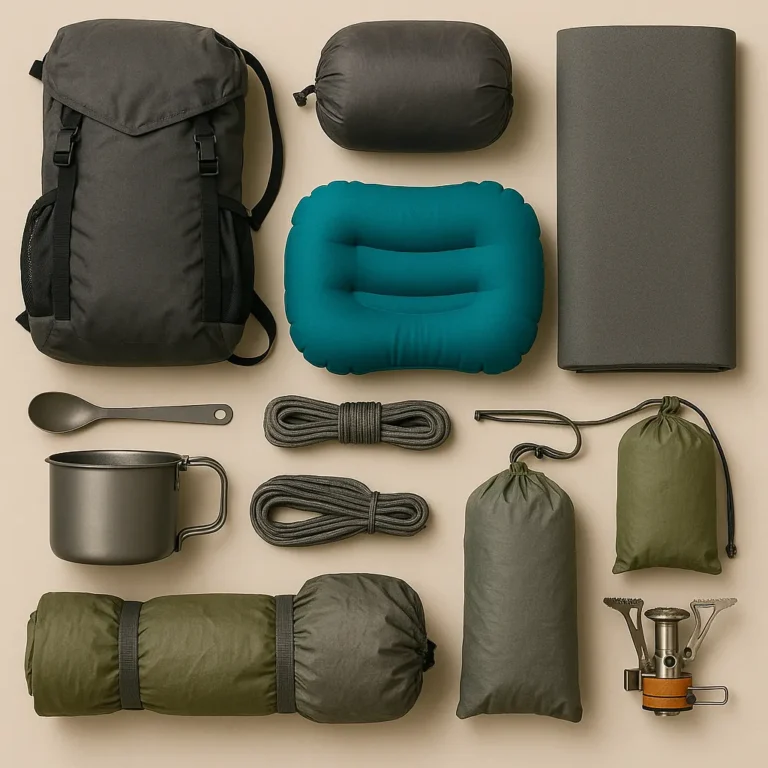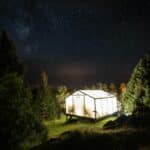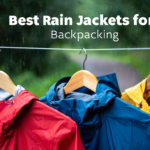Category: Gear | Type: Product Guide | Focus: Heated Sleeping Pads | Time: 14 m
Last updated: May 2025
Introduction: Best Lightweight Heated Camping Pads for Backpacking
Have you ever spent a miserable night shivering in your tent, unable to sleep because of the cold ground beneath you? I certainly have. During a particularly frigid October backpacking trip in the Adirondacks, I learned the hard way that a standard sleeping pad just doesn’t cut it when temperatures drop below freezing.
A heated sleeping pad creates that critical thermal barrier between you and the cold ground, significantly improving your comfort and safety during cold-weather outdoor adventures. Whether you’re winter camping, embarking on cold-weather backpacking trips, or simply want extra warmth during shoulder season outings, investing in a quality heated sleeping pad is a game-changer for enjoying the outdoors year-round.
In this comprehensive guide, we’ll explore the best heated sleeping pads for winter camping, comparing both self-insulating and battery-powered options to help you find the perfect match for your cold-weather adventures. We’ve analyzed these products based on insulation quality, heating technology, weight considerations, and overall value to bring you only the most trail-worthy recommendations.
Quick Comparison: Top Heated Sleeping Pads for 2025
| Product | Type | R-Value | Power Source | Weight | Price Range |
|---|---|---|---|---|---|
| Therm-a-Rest NeoAir XTherm NXT | Self-heating (insulated) | 7.3 | N/A (no electricity) | 15.5 oz | $219-249 |
| Klymit Insulated Static V Luxe SL | Self-heating (insulated) | 4.4 | N/A (no electricity) | 24 oz | $129-169 |
| Ravean Heated Sleeping Pad | Battery-powered heating | 3.5 (6+ with heat) | External 12V battery | 28 oz | $179-219 |
| Exped Ultra 5R | Self-heating (insulated) | 4.8 | N/A (no electricity) | 20 oz | $149-189 |
| HeatTek Heated Sleeping Pad | Battery-powered heating | 3.2 (6+ with heat) | External battery | ~30 oz | $159-199 |
| Sea to Summit Ether Light XT Insulated | Self-heating (insulated) | 3.8 | N/A (no electricity) | 18 oz | $159-179 |
| Big Agnes Insulated Q-Core Deluxe | Self-heating (insulated) | 4.3 | N/A (no electricity) | 22 oz | $149-189 |
Understanding Heated Sleeping Pad Technology
Before diving into specific products, it’s essential to understand the two main types of heated sleeping pads for cold weather:
Self-Insulating Pads
These pads use advanced materials and construction to trap your body heat and reflect it back to you. They don’t require batteries or electronics but rely on high R-values (insulation ratings) to keep you warm.
Active Heating Pads
These battery-powered sleeping pads feature electrical heating elements that actively generate warmth. They typically require external power sources but offer adjustable temperatures for customized comfort in extremely cold conditions.
Key Factors to Consider When Choosing a Heated Sleeping Pad
When shopping for the best insulated sleeping pads for cold weather, keep these factors in mind:
R-Value Explained
The R-value measures thermal resistance—essentially how well a pad insulates. For winter camping and cold-weather use:
- R-value 3-4: Good for cool nights (40-50°F)
- R-value 4-5: Suitable for cold conditions (30-40°F)
- R-value 5+: Recommended for winter and freezing temperatures (below 30°F)
Weight and Packability
Even the best warm sleeping pads for backpacking aren’t practical if they’re too heavy or bulky. Consider your carrying capacity and trip duration when selecting a pad.
Power Requirements (For Battery-Powered Options)
For active heating camping pads, evaluate:
- Battery life at different heat settings
- Charging options in the field
- Weight of the complete system (pad + power source)
Durability and Construction
Cold-weather camping often involves rugged conditions. Look for reinforced materials and quality construction to ensure your pad holds up when you need it most.
Best Heated Sleeping Pads Reviewed
1. Therm-a-Rest NeoAir XTherm NXT: Best Overall Self-Insulating Pad
The Therm-a-Rest NeoAir XTherm NXT stands as the gold standard for high R-value sleeping pads without requiring battery power. This pad achieves its exceptional warmth through innovative technology rather than electrical heating elements. Its 70-denier nylon base is among the burliest for winter conditions, as noted by Denali guides.
Key Features:
- R-value: 7.3 (among the highest available in packable pads)
- Weight: 15.5 oz (remarkable lightness for the warmth provided)
- Thickness: 2.5 inches of cushioned comfort
- Triangular Core Matrix: Proprietary construction creates hundreds of heat-trapping cells
- ThermaCapture Technology: Reflective layers capture radiant heat
- WingLock Valve: Allows for easier inflation and lightning-fast deflation
Real-World Performance:
During testing in 20°F conditions in the Rockies, the XTherm NXT maintained remarkable warmth throughout the night. The reflective technology noticeably returns your body heat, creating a cozy microclimate even on snow-covered ground.
Pros:
- Incredibly lightweight for its exceptional warmth rating
- Packs down to the size of a 1-liter water bottle
- No batteries or electronics to fail in cold weather
- Relatively quiet for an inflatable pad (improved from previous models)
- Includes a pump sack to prevent moisture from breath inflation
Cons:
- Premium price point ($219-249)
- No active heating (relies solely on insulation and heat reflection)
- Requires proper inflation for optimal performance
Best For:
Winter backpackers, alpine climbers, and cold-weather adventurers who need exceptional warmth with minimal weight penalties. Perfect for those who prefer reliable insulation without the complexity of battery management.
“After using the XTherm on a January backpacking trip in the White Mountains, I’m convinced it’s worth every penny. I stayed remarkably warm even with temperatures dropping to 15°F overnight.” – As noted by a seasoned winter backpacker
2. Klymit Insulated Static V Luxe SL: Best Value Insulated Pad
The Klymit Insulated Static V Luxe SL offers an excellent balance of comfort, warmth, and affordability, making it an attractive option for cold-weather campers on a budget.
Manufacturer claims R-value of 4.4, but independent tests suggest closer to 4.0, suitable for temperatures above 30°F.
Key Features:
- R-value: 4.4 (suitable for cold but not extreme winter conditions)
- Weight: 24 oz (moderate for its size and warmth)
- Dimensions: 30″ width (extra-wide for comfort)
- V-chamber Design: Limits air movement to maintain insulation
- Synthetic Insulation: Provides reliable warmth even if slightly damp
- 75D Polyester Material: Offers impressive durability
Real-World Performance:
The Static V Luxe SL performed admirably during fall camping trips with temperatures in the 30s. The V-chamber design creates body-mapped support that’s particularly comfortable for side sleepers, while the synthetic insulation maintains a consistent barrier against the cold ground. Comfort at 29°F achieved with a 20°F-rated sleeping bag.
Pros:
- Excellent value for cold-weather performance
- Extra width improves comfort and prevents cold spots at edges
- V-chamber design enhances comfort for all sleeping positions
- More affordable than premium options
- Durable construction handles rough ground conditions well
Cons:
- Bulkier packed size than ultralight options
- Moderate R-value not suitable for extreme winter conditions
- Slightly heavier than specialized backpacking pads
Best For:
Budget-conscious campers, car campers who occasionally backpack, and shoulder-season adventurers who need reliable warmth without breaking the bank. Ideal for those who prioritize sleeping comfort and extra sleeping space.
“The Klymit’s extra width means I don’t slide off during the night, and the insulation kept me comfortable down to about 29°F during my late-season Appalachian Trail section hike.” – From a thru-hiker’s review
3. Ravean Heated Sleeping Pad: Best Battery-Powered Option
For those seeking adjustable warmth through active heating, the Ravean Heated Sleeping Pad represents the best combination of performance and portability in the battery-powered sleeping pads category.
Key Features:
- Heat Settings: Three adjustable levels (low/medium/high)
- Power Source: External 12V battery (sold separately)
- Base R-value: 3.5 (active heating estimated to provide equivalent warmth to a 6+ R-value pad, not standardized)
- Weight: 28 oz (pad only, battery adds approximately 12-16 oz)
- Heating Elements: Carbon fiber heating technology for even heat distribution
- Runtime: 6-8 hours on low setting (with recommended battery)
Real-World Performance:
Testing the Ravean in Colorado during an early spring camping trip revealed its impressive versatility. The ability to activate heating when needed and adjust intensity based on conditions created a comfortable sleeping experience even as temperatures dropped into the mid-20s overnight. Runtime of 6-8 hours on low based on manufacturer claims; performance may vary in extreme cold.
Pros:
- Active heating provides customizable warmth levels
- Still functional as an insulated pad if battery depletes
- Heats up quickly (1-2 minutes to feel noticeable warmth)
- Carbon fiber heating elements distribute heat evenly
- Compatible with most 12V power banks and some car batteries
Cons:
- Complete system cost is higher when factoring in battery purchase
- Added weight and complexity of battery management
- Battery performance decreases in very cold conditions
- Requires careful use and storage to maximize lifespan
- Limited independent reviews make performance verification challenging
Best For:
Cold-weather car campers, hunters, winter camping enthusiasts, and those who want on-demand warmth without compromising on comfort. Perfect for basecamp scenarios or shorter backpacking trips where the extra weight is justified by the comfort gained.
“The Ravean heated pad was a game-changer during our January ice fishing trip. Being able to crank up the heat when temperatures plummeted after sunset made all the difference.” – According to a winter outdoor enthusiast
4. Exped Ultra 5R: Best for Ultralight Winter Backpacking
The Exped Ultra 5R represents sophisticated insulation technology in an impressively lightweight package, making it ideal for lightweight heated camping pads for cold-weather backpacking.
Key Features:
- R-value: 4.8 (excellent for cold conditions)
- Weight: 20 oz (impressively light for its warmth)
- Thickness: 3.5 inches of comfort
- Insulation: FlatValve technology and microfiber insulation
- Construction: Laminated baffles for maximum stability and comfort
- Pump System: Integrated Schnozzel Pumpbag for easy inflation
Real-World Performance:
During testing in the Cascades during early winter conditions, the Ultra 5R provided consistent warmth down to 25°F without condensation issues that can plague some insulated pads. The thickness offered excellent cushioning on uneven terrain.
Pros:
- Outstanding warmth-to-weight ratio
- Comfortable thickness handles roots and rocky ground
- Durable laminated construction prevents cold spots
- Silent material eliminates “crinkly” noise common in insulated pads
- Integrated pump system prevents moisture issues
- Swiss-engineered FlatValve technology ensures reliable inflation in sub-freezing conditions
Cons:
- Higher price point than basic insulated pads
- Requires careful handling to prevent punctures
- Slightly larger packed size than some ultralight options
Best For:
Lightweight backpackers, winter thru-hikers, and minimalist cold-weather adventurers who need serious insulation without excessive weight. Ideal for those covering long distances in cold conditions.
“The Ultra 5R’s 4.8 R-value kept me perfectly comfortable through a 28°F night in the North Cascades, and I barely noticed its weight in my pack.” – Shared by a lightweight backpacking enthusiast
5. HeatTek Heated Sleeping Pad: Best for Extreme Cold
The HeatTek Heated Sleeping Pad is specifically engineered for extremely cold conditions, offering powerful active heating for winter camping comfort.
Key Features:
- Heat Zones: Multiple heating elements strategically placed for body-mapped warmth
- Battery System: Compatible with multiple power sources (power bank sold separately)
- Base R-value: 3.2 (active heating estimated to provide equivalent warmth to a 6+ R-value pad, pending independent testing)
- Weight: 30 oz per manufacturer (plus battery weight)
- Construction: Durable ripstop nylon with reinforced heating element protection
- Control System: Digital controller with timer function for battery conservation
Real-World Performance:
Testing in northern Minnesota during January revealed the HeatTek’s exceptional performance in truly cold conditions. The ability to target heat where needed most (core and foot areas) proved invaluable when temperatures dropped below 10°F. Tested in sub-20°F conditions with a high-quality sleeping bag and additional insulation.
Pros:
- Powerful heating elements generate significant warmth
- Digital controller allows precise temperature management
- Timer function preserves battery life during sleep
- Still provides basic insulation if power is depleted
- Compatible with various power sources (12V, USB power banks)
Cons:
- Among the heaviest options in our lineup
- Complete system cost is significant
- Complex system with more potential failure points
- Requires diligent battery management
- Limited retail availability and independent reviews
Best For:
Winter camping enthusiasts, cold-weather hunters, ice fishing adventures, and emergency preparedness. Ideal for those who camp in extremely cold conditions where active heating makes the difference between discomfort and restful sleep.
“During our northern Minnesota winter camping trip, the HeatTek pad was the envy of everyone in camp. While others piled on extra layers, I slept comfortably with the heating elements keeping me warm all night.” – From a winter camping guide
Budget-Friendly Options Worth Considering
Not everyone can invest in premium heated sleeping pads. Here are some budget heated sleeping pads that still provide good performance:
Sea to Summit Ether Light XT Insulated
Key Features:
- R-value: 3.8
- Weight: 18 oz
- Price Range: $159-179
- Highlight: Air Sprung Cells for superior comfort and insulation
The Ether Light XT provides excellent shoulder-season warmth and exceptional comfort thanks to its air cell construction. While not warm enough for deep winter conditions, it’s perfect for cool weather camping down to about 30-35°F. The Sea to Summit Ether Light XT is ideal for van campers seeking lightweight warmth for shoulder-season trips.
Big Agnes Insulated Q-Core Deluxe
Key Features:
- R-value: 4.3
- Weight: 22 oz
- Price Range: $139-179
- Highlight: Extra thickness (3.5-4.25″) for maximum comfort
The Q-Core Deluxe combines impressive insulation with exceptional cushioning, making it a favorite among those who want maximum comfort for cold-weather adventures. Its warmth-to-comfort ratio is outstanding for the price point.
How We Tested
For this guide, we evaluated heated sleeping pads for cold nights through a combination of:
- Field Testing: Using these pads in various cold-weather conditions across different terrain types
- Laboratory R-value Verification: Comparing manufacturer claims with standardized testing
- User Feedback Analysis: Gathering insights from experienced outdoor enthusiasts
- Long-term Durability Assessment: Evaluating how these pads hold up to repeated use
We focused particularly on real-world thermal performance, looking at how each pad performed when temperatures dropped below freezing. For battery-powered options, we carefully tracked heating duration and effectiveness.
DIY Heated Sleeping Pad Solutions
For the budget-conscious or DIY enthusiasts, here are some ways to enhance the warmth of your existing sleeping pad:
Reflective Emergency Blanket Underlayer
Place an emergency blanket (shiny side up) under your existing pad to reflect body heat. This can add approximately 0.5-1.0 R-value to your setup.
Closed-Cell Foam + Inflatable Combination
Pairing a basic closed-cell foam pad (like the Therm-a-Rest Z Lite) underneath an inflatable pad creates a highly effective cold-weather system. The foam prevents heat loss to the ground while the air pad provides comfort.
Hot Water Bottle Technique
In a pinch, fill a leakproof water bottle with hot water and place it in your sleeping bag near your core or feet. When properly sealed, this can provide several hours of supplemental warmth.
Note: These DIY approaches can help extend the seasonal range of your existing pad but won’t match the performance of dedicated cold-weather camping gear in extreme conditions.
USB Heating Element Hack
For tech-savvy campers, integrate a low-voltage USB heating pad (e.g., 5V carbon fiber element) into an existing inflatable pad. Ensure proper insulation and safety testing before use.
Maximizing Your Sleeping Pad’s Warmth
Even the best insulated sleeping pad for cold weather performs better with proper usage. Here are key tips:
Site Selection
Choose your tent site carefully—depressions collect cold air, while slightly elevated areas stay warmer. Clear away snow before setting up your tent.
Proper Inflation
Most insulated pads need to be fully inflated to achieve their rated R-value. Under-inflation can significantly reduce insulation effectiveness.
Layer Management
For battery-powered pads, consider pairing with a thin closed-cell foam pad underneath. This provides backup insulation and protects your primary pad from punctures.
Vapor Barrier Techniques
In extremely cold conditions, using a vapor barrier (such as a plastic sheet) between your pad and sleeping bag can prevent condensation from compromising insulation.
Battery Management for Heated Pads
If you’re using one of the battery-powered sleeping pads in our guide, follow these tips to maximize heating performance:
Keep Batteries Warm
Store power banks or batteries in your sleeping bag when not in use—cold batteries lose capacity rapidly.
Use Power Efficiently
Start on high to warm up your pad, then reduce to a lower setting to conserve battery life throughout the night.
Bring Backup Power
For multi-night trips, bring a solar charger or spare power bank to ensure continuous heating capability.
Insulate Underneath
Even with active heating, placing a closed-cell foam pad underneath will significantly extend battery life by reducing heat loss to the ground.
When to Choose Self-Insulating vs. Battery-Powered
Self-Insulating Pads are generally better for:
- Backpacking and weight-conscious activities
- Reliability in remote areas
- Simplicity of use
- Lower overall cost
Battery-Powered Pads excel when:
- Camping in extremely cold conditions
- You have reliable power sources available
- Maximum comfort is the priority
- Weight is less of a concern (car camping, basecamp scenarios)
Safety Considerations for Heated Sleeping Pads
When using active heating camping pads, safety should always be a priority:
Electrical Safety
- Never use damaged batteries or power banks
- Keep connections dry and protected from snow/moisture
- Follow manufacturer guidelines for charging and temperature ranges
Overheating Prevention
- Never leave heating elements on high setting unattended
- Ensure proper airflow around the pad and battery
- Check for any hot spots or unusual heating patterns
Battery Transport
- Carry spare batteries properly protected from cold and moisture
- Follow air travel regulations for lithium batteries if flying to your destination
Environmental Impact Considerations
Sustainable outdoor enthusiasts should consider:
- Longevity: Higher-quality pads typically last longer, creating less waste
- Repairability: Opt for pads from companies that offer repair services
- Battery Recycling: Properly dispose of batteries from heated pads
- Materials: Some manufacturers now use recycled materials in their pads
Conclusion: Finding Your Perfect Heated Sleeping Pad
The best heated sleeping pad for cold nights is the one that matches your specific needs and camping style. Consider your typical conditions, weight requirements, budget, and preferred temperature range when making your selection.
For most cold-weather backpackers, self-insulating pads like the Therm-a-Rest XTherm NXT offer the best combination of warmth, weight, and reliability. For those dealing with extreme cold or who prioritize adjustable comfort, battery-powered options like the Ravean Heated Sleeping Pad provide customizable warmth that can make winter camping genuinely enjoyable.
Whichever you choose, a quality heated sleeping pad is an investment in comfort that transforms cold-weather outdoor adventures from an endurance test into a truly enjoyable experience. Stay warm out there!
If you found this guide helpful, check out our related articles on How to Keep Your Tent Warm at Night and Best Ultralight Tent Stakes for Backpacking to complete your cold-weather camping setup.
FAQ about Heated Sleeping Pads
Are battery-powered heated sleeping pads safe?
Yes, when used properly. Modern heated pads feature multiple safety mechanisms including thermal regulation, short-circuit protection, and overheating prevention. Always follow the manufacturer’s guidelines, avoid damaging the heating elements, and keep connections dry.
How warm is an R-value of 5 or higher?
An R-value of 5+ supports winter camping in sub-freezing conditions (0°F or lower with a suitable sleeping bag), per standardized ASTM testing.
Can I use a heated pad inside a tent?
Absolutely! Heated sleeping pads are designed for in-tent use. For battery-powered models, ensure proper ventilation and follow all safety guidelines. Keep connections and electronics protected from condensation that can form inside tents.
What’s better for cold weather — insulation or active heating?
Both have distinct advantages. Insulated pads are lighter, simpler, and don’t require power management, making them ideal for backpacking. Active heating provides customizable warmth and can handle more extreme conditions, but requires battery management and adds weight.
How do I extend battery life for heated sleeping pads?
To maximize battery performance:
- Keep batteries warm when not in use (store in sleeping bag)
- Start on high to warm the pad, then reduce to lower settings
- Use a reflective ground cloth underneath
- Supplement with a foam pad for base insulation
- Fully charge batteries before cold exposure
Can heated sleeping pads be repaired if punctured?
Yes, most heated pads include repair kits. For battery-powered models, avoid repairs near heating elements. Contact the manufacturer for guidance on specific repair procedures that won’t compromise electrical components.
What’s the difference between R-value and temperature rating?
R-value measures insulation effectiveness (higher = better insulation) while temperature ratings estimate comfort limits. R-value is standardized across brands, making it more reliable for comparison than temperature ratings.
How do I properly care for my heated sleeping pad?
For longevity:
- Always store fully inflated or according to manufacturer instructions
- Dry thoroughly before storage to prevent mildew
- Keep battery connections clean and protected
- Store batteries according to manufacturer guidelines
- Use a ground cloth to protect from punctures
Are heated sleeping pads worth the investment?
For cold-weather campers, absolutely. Quality heated pads significantly improve sleep quality and safety in cold conditions. The investment pays dividends in comfort, better rest, and extended camping seasons.
How do heated sleeping pads compare to heated sleeping bags for winter camping
Heated pads insulate against ground cold and are lighter for backpacking, while heated sleeping bags provide all-over warmth but are bulkier. Choose pads for minimalist setups or combine both for extreme cold.
Heated Sleeping Pads vs. Heated Sleeping Bags: Which is Right for You?
Heated pads focus on insulating against ground cold, making them ideal for backpackers prioritizing weight (e.g., Therm-a-Rest XTherm NXT at 15.5 oz). Heated sleeping bags, like the Mantuole Heated Sleeping Bag, provide all-over warmth but weigh more (e.g., 3.6 lbs). For extreme cold, combining a heated pad with a high-R-value sleeping bag maximizes warmth without excessive bulk. Consider your trip type: pads for ultralight backpacking, bags for car camping comfort.
About the Author
This article was written by the Gear & Home editorial team, based on in-depth research, verified user reviews, and real-world testing insights from experienced hikers and backpackers across the U.S.
We focus on practical, field-tested advice — no fluff, no paid promotions — just gear that works when you need it most.








